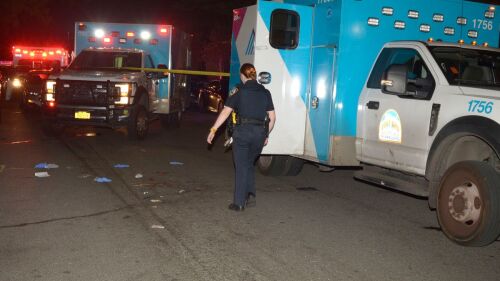Your medics have heard the phrase, “assume the best of your patients and prepare for the worst;” and as planners, leaders and decision makers, you have also heard the phrase, “it takes a whole-system approach.”
As an EMS leader, you likely have a concerted and ongoing culture of safety efforts at your agency aimed at traffic fatalities, medication errors and unacceptable patient handling. You must also create a culture of safety and initiatives to protect your EMTs and paramedics from the violence they encounter on the streets from patients and bystanders. Following are four steps to a whole-system approach to protecting personnel from violence.
1. Communicate that crew safety is more important than patient care
You must reinforce to your crewmembers that they are not expected to expect being assaulted and battered as “part of the job.” This means supporting – and certainly not dissuading or penalizing – your crewmembers when they pursue criminal charges or civil remedies against violent actors. This means supporting your crewmembers who may have been forced by circumstance to flee scenes, halt patient care, delay transports or call law enforcement to avoid violence.
Your personnel have had the concept of “patient abandonment” pounded into their heads throughout their EMS education. Look for opportunities to assure your personnel that violent patients or bystanders are scene safety concerns they are not expected to ignore or power through. Departing a scene and calling for law enforcement, even if the patient and equipment cannot be safely evacuated with the providers, is not patient abandonment. No law imposes a duty to provide care in situations with an uncontrolled risk of injury or death imposed by a violent patient or bystander.
2. Support crewmembers who have been the victim of violence
This further means supporting crewmembers who have been forced to fight for their life and limb while on duty. Listen to and believe the accounts given by your crewmembers concerning violent attacks until and unless clear evidence contradicts them. Entrust the appropriate authorities to make conclusions about whether, when faced with an attacking perpetrator, a provider acted in justified self-defense within the bounds of law, unless an internal review is appropriate to determine whether violations of policies or procedures contributed to the events and their outcomes.
3. Make it clear to patients that violence will not be tolerated
Hospitals around the country have taken to erecting signs in the waiting room warning the public that outbursts, threats and violence will not be tolerated. Furthermore, these signs declare openly that the institutions support employees who pursue criminal charges against people who commit acts of violence against them. Some New York ambulances are now similarly adorned with warnings concerning the criminal implications of assaulting EMS personnel. Consider whether your agency may employ similar means.
4. Gather data to track and prevent violent acts
Finally, it is difficult to characterize and define a problem if it is not studied. Your agency should gather data surrounding violent encounters. Consider encouraging your personnel to document violent encounters in detail within PCRs, but also create a separate reporting method.
Collecting data, including addresses and event details, can identify trends and where additional support may be needed (e.g., possibly flagging addresses with CAD warnings or auto-dispatch of law enforcement). Tracking also provides an immediate flag, triggering rapid contact by your Critical Incident Stress Debriefing team or peer support system to help personnel decompress and debrief the event. Tracking also serves as contemporaneous documentation in any legal proceedings which may occur.
Don’t fail your personnel
A crewmember rendered inoperative is no help to anyone. Not only should that be a matter of simple human decency and respect to protect providers, but it is also in your agency’s pragmatic and fiscal interest. Workman’s Compensation claims, FMLA, missed shifts and missing rigs; as well as the cascading impact of liability and under-covered service areas are all expensive propositions.
Your municipalities and communities need your services and the dedicated work of your personnel. These rising risks of the job will begin to drown your crews if your support does not rise to keep them afloat. You cannot afford, in every sense, to fail to address this issue by clear and specific means.






